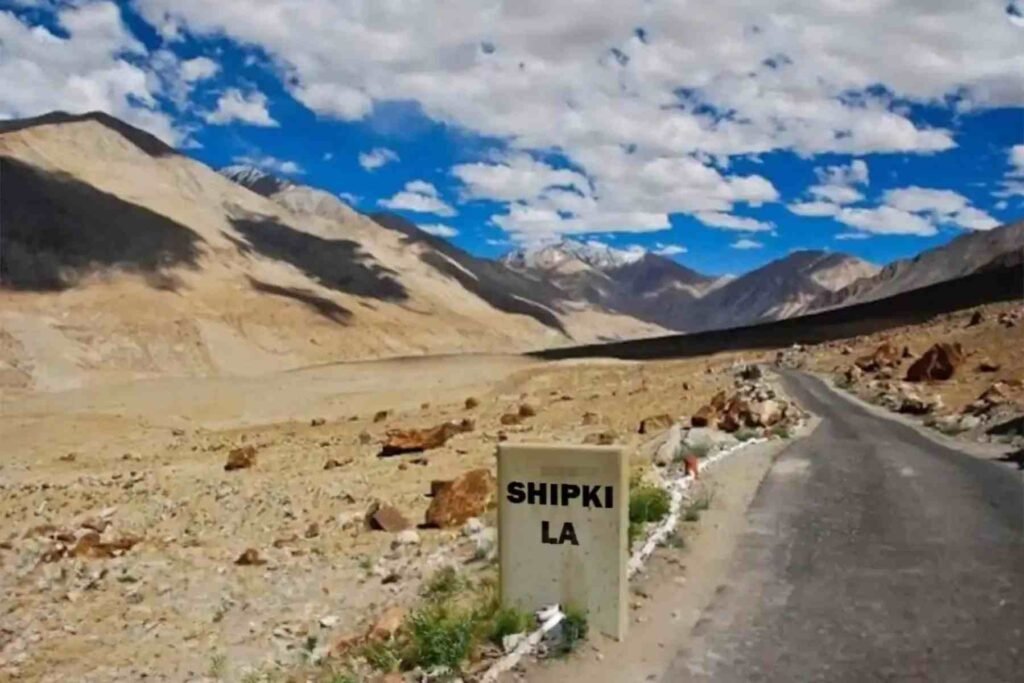A New Chapter in Bilateral Relations
After years of uncertainty and restrictions, India and China are planning to resume trade through the historic Shipki-La pass in Himachal Pradesh. Nestled in the Kinnaur district, Shipki-La has long served as one of the crucial routes connecting the two countries. The move is being seen not just as a matter of commerce, but as a symbolic step towards improving relations and reviving centuries-old cultural exchanges across the Himalayan belt.
For people living near the Indo-China border in Himachal Pradesh, the reopening of this trade route is more than a political headline. It represents hope, livelihood, and the possibility of renewed cultural connections that had once flourished before tensions disrupted them.
The Legacy of Shipki-La
Shipki-La has always been a significant gateway for trade between India and Tibet. Historically, locals would trade wool, salt, and agricultural produce with communities across the border. For centuries, this route acted as a lifeline, sustaining border economies and strengthening people-to-people bonds.
The route, however, was shut for formal trade decades ago, and only limited movement continued under strict supervision. With changing geopolitical realities, the pass lost its once-vital role. Now, with discussions underway to resume formalized trade through Shipki-La, there is a sense of revival — of both tradition and opportunity.
Economic Opportunities for Border Communities
For residents of Kinnaur and nearby regions, reopening Shipki-La is not merely about bilateral politics but about economic survival. Farmers in the area have long expressed the need for better market access for their produce, including apples, dry fruits, and medicinal herbs. Similarly, traditional handicrafts and small-scale goods could find new buyers across the border.
The revival of this trade route promises to create jobs, boost tourism, and strengthen small businesses that rely heavily on cross-border commerce. More importantly, it could bring infrastructural development — better roads, enhanced connectivity, and new facilities — all of which would benefit local communities.
A Symbol of Trust-Building
India-China relations have faced several challenges in recent years, especially along the border. The decision to discuss trade through Shipki-La comes at a time when both sides are exploring ways to reduce friction and build confidence. Trade, in this sense, becomes a bridge — one that allows cooperation even when larger disputes remain unresolved.
Experts believe that such initiatives can help build trust step by step. While political tensions may take years to resolve, people-to-people exchanges and local economic partnerships can lay a softer foundation for long-term peace.
Reviving Centuries-Old Cultural Links
Beyond economics, Shipki-La holds immense cultural importance. For generations, the Himalayan belt has witnessed exchanges of not just goods but traditions, food, language, and ideas. The resumption of trade would rekindle this spirit of cultural dialogue.
Local elders in Kinnaur often recall stories of vibrant markets where traders from across the mountains would bring salt and wool in exchange for grains, jaggery, and textiles. These stories are deeply ingrained in the identity of the region, and reopening Shipki-La feels like bringing those memories back to life.

Boost to Tourism and Connectivity
Himachal Pradesh’s stunning landscapes are already a magnet for domestic and international tourists. The reopening of Shipki-La could add another layer of attraction. Adventure tourism, cultural tours, and heritage trails might flourish along this route. Visitors would not only explore natural beauty but also witness a region that once connected civilizations.
The focus on trade is also expected to push the government to invest in infrastructure around Kinnaur. Better roads, improved transport facilities, and border amenities will not only serve traders but also create smoother travel for tourists and locals alike.
Local Voices of Hope
For people in Kinnaur, the reopening of Shipki-La is not just a policy decision; it is a dream. Many families who had once depended on cross-border trade are hopeful that the renewed route will bring back prosperity.
Farmers look forward to larger markets for their crops, while artisans hope their crafts will gain recognition beyond borders. Young people see opportunities for jobs, entrepreneurship, and tourism-related ventures. The excitement is palpable, with many locals viewing the move as a chance for their region to finally step into a brighter future.
Challenges Ahead
While the news brings hope, challenges remain. Ensuring security along the border is a key priority. Smooth customs processes, infrastructure readiness, and clarity in trade agreements will be essential. Moreover, balancing economic exchanges with the larger geopolitical sensitivities will require careful diplomacy.
However, many believe that challenges can be overcome with goodwill and planning. The spirit of cooperation, once ignited, can pave the way for creative solutions.
A Step Towards Healing and Growth
The reopening of Shipki-La stands as a reminder that even in times of global uncertainty, nations can choose dialogue and cooperation over isolation. For India and China, the step signals a willingness to look beyond disputes and acknowledge the importance of shared prosperity.
For the local communities of Himachal Pradesh, it represents hope, opportunity, and connection — things that are often more powerful than political gestures. For both nations, it is a chance to write a new chapter — one where trade becomes a tool for peace, and ancient ties are given modern meaning.
Looking Ahead
As talks progress and the reopening of Shipki-La comes closer to reality, the mood is shifting from cautious optimism to eager anticipation. While the world watches the political implications, the people of Himachal are preparing to embrace a change that could redefine their lives.
The road through Shipki-La is more than just a trade route. It is a path to reconnect histories, to bring cultures closer, and to remind us all that borders, while dividing territories, cannot stop the flow of human connection.
Read more- Asia Cup 2025 Squads: Full list of teams and players announced so far.











Leave a comment